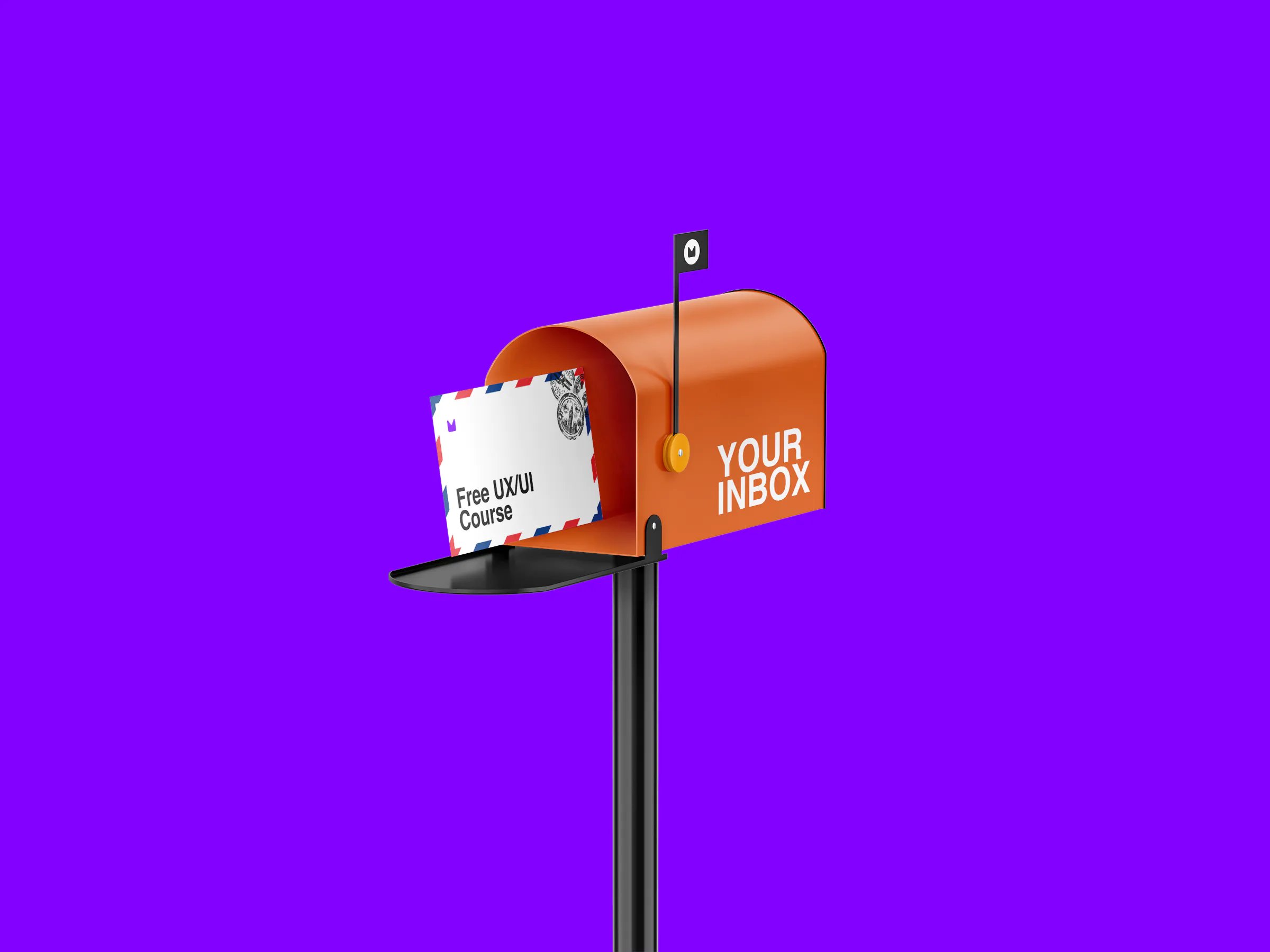

Get a Free UX/UI Course in Your Inbox Every Day for 15 Days
By the end of this three-week crash course, you'll have a much better understanding of the tech industry, the design craft, and all the knowledge you need to start building your career.

Get a Free UX/UI Course in Your Inbox Every Day for 15 Days
By the end of this three-week crash course, you'll have a much better understanding of the tech industry, the design craft, and all the knowledge you need to start building your career.

Designing a product or service can often feel like navigating a maze, especially when you're knee-deep in the research phase. All the data, insights, charts, and graphs can sometimes feel like an indecipherable code, and deciding on a research method can feel like finding a needle in a haystack. You might find yourself asking, "Did I choose the right method?" or "Will this even yield meaningful insights?"
Through time and experience, I've discovered that there's light at the end of this maze. The key is to simplify the process into manageable chunks, and to do this, I've identified three key steps that have been a game-changer for me. These steps have demystified the research method selection process and given me the confidence to make decisions that positively impact the design process. Let's delve into these four steps that could change the way you approach UX research.

Just as in life, a clear vision and direction are essential to success; the same truth holds in the realm of UX research. If we embark on a journey without knowing where we want to end up, we may find ourselves going around in circles, only to realize we've strayed far from the path we intended to follow. When we are clear about our objectives and the destination we aim for, the journey becomes simpler and more rewarding.
The same principle applies when we start any research process. The moment we establish our destination — the knowledge we seek —, the path becomes more straightforward. Sometimes we need to validate or invalidate an assumption; other times, we may be venturing into completely uncharted territory, eager to uncover new insights.
Coming back to the topic at hand, every research initiative must begin with a comprehensive evaluation of the research knowledge, goals, as well as project constraints. This involves understanding the reasons for conducting the research and identifying the knowledge gaps that the research aims to fill. Are you striving to understand user behavior? Are you investigating how a specific feature influences user satisfaction? Or maybe you're looking to optimize the user interface for better usability. The answers to these questions are integral to defining your research goals.
While your research goals act as the guiding star, let's not overlook the logistical elements that often play a significant role in shaping your research process. Assess the project's constraints, such as timeline, budget, available tools, existing research, and user panels. These factors can either broaden your options or push you towards a more focused path of inquiry. Considering these logistical aspects helps you discern the research methods that are feasible and practical within your set boundaries. Considering these logistical aspects helps you discern the research methods that are feasible and practical within your set boundaries. Speaking from personal experience, I can't stress enough how important this evaluation phase is. It's like setting the sails right before embarking on a sea voyage – the initial direction has a lasting impact on the journey ahead, influencing every subsequent stage of the research selection. It's not just about choosing the right research method; it's also about ensuring the method aligns with your project's realities.

Now that you've established the terrain of the unknown and assessed the scope of possibilities, it's time to zoom in on the specifics of what you need to uncover. Here, you need to ask yourself some critical questions to further guide your research endeavors.
Are you trying to understand the intricacies of user behavior? Do you want to delve into the 'hows' and 'whys' of their actions? If your answer is yes, then qualitative research is your friend who can help you unravel these mysteries.
Alternatively, if you're seeking to quantify user behavior, looking for concrete evidence and numbers, or wanting to know the frequency of certain user actions, you can rely on quantitative research. Surveys and other quantitative research methods can provide you with solid statistics and measurable data.
Now let's dive a little bit into what each of them entails. Qualitative researchhelps uncover reasons, opinions, motivations, and emotions that drive users' actions, providing a deeper understanding of their experiences, needs, and challenges. It's about looking at the quality of user interactions and experiences, rather than just the quantity. Methods often used in qualitative research include in-depth interviews, focus groups, and ethnographic studies, which provide rich, detailed data that can generate powerful insights.
On the other hand, quantitative research focuses on measuring user behavior, providing statistical, numerical data that can be analyzed objectively. This method answers questions like 'how many?' or 'how much?' and seeks to quantify behaviors, opinions, or attitudes. It's particularly useful when you want to validate hypotheses or when you need to understand the scale or prevalence of certain behaviors or attitudes. Surveys, analytics, and A/B testing are common methods used in quantitative research, providing robust data that can be extrapolated to a larger population.
Sometimes, you might find that combining both research methodologies works best for your project. For instance, you can start with qualitative research to understand user behavior and then move to quantitative research to measure the extent or prevalence of those behaviors. By blending these two approaches, you get a well-rounded and comprehensive understanding of your user base.

Lastly, the development stage of the product or service you're researching heavily influences the choice of research method. Are you looking at an existing product, or are you exploring opportunities because there is no solution available yet? Perhaps you have potential solutions lined up for testing, or maybe you want to evaluate the success of an implemented solution.
Your research method will vary based on whether your aim is to understand user needs for a new product, gauge user reactions to an existing one, or evaluate the success of a recently launched service. Therefore, identifying your product or service's development stage is an essential step in choosing your research approach.

Choosing the right UX research method is often a complex process that involves striking a balance between project constraints, research goals, and user needs. But having clarity on what you want to achieve can help you navigate this process much better. If you want to read more on the topic, I check out "When to Use Which User-Experience Research Methods" by Christian Rohrer on the Nielsen Norman Group's website. This comprehensive guide will provide an in-depth understanding of choosing the most appropriate UX method for your challenge. Good luck!